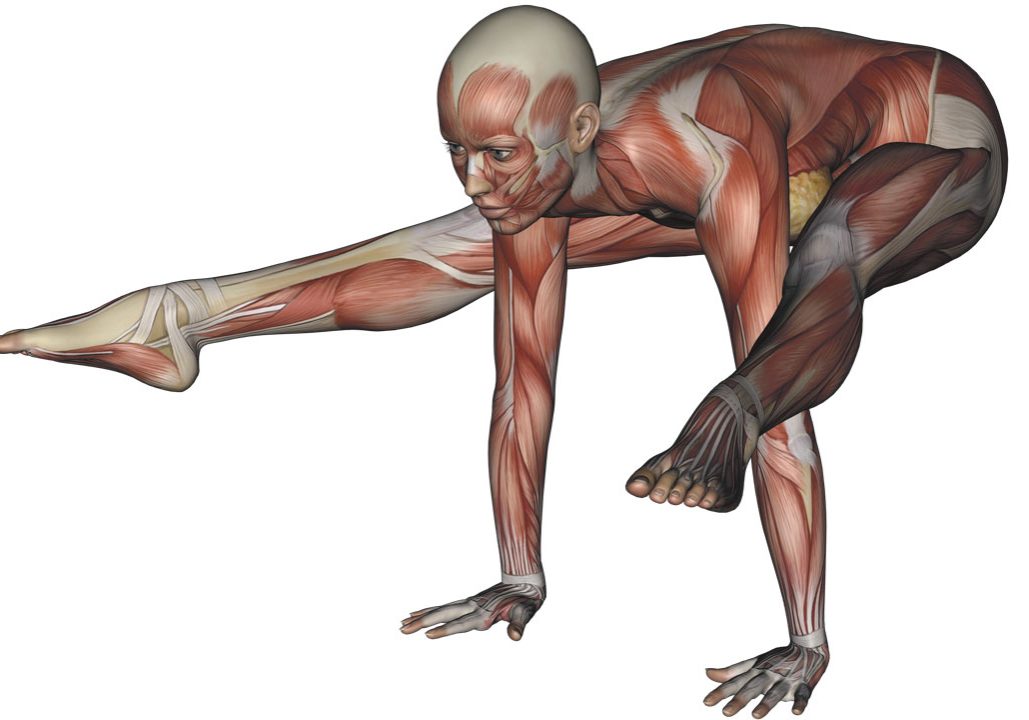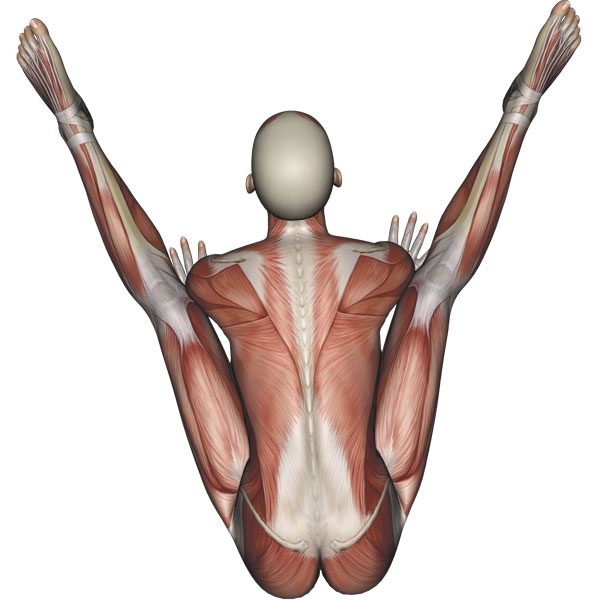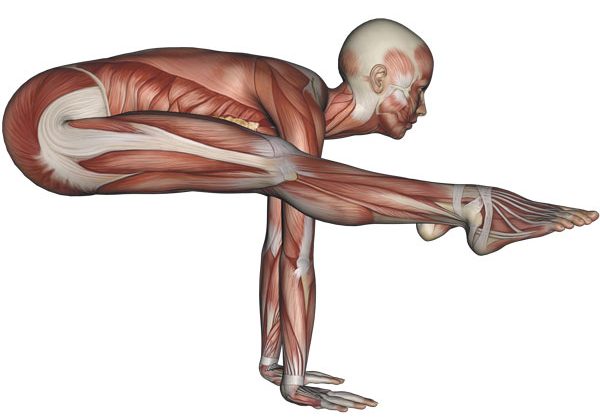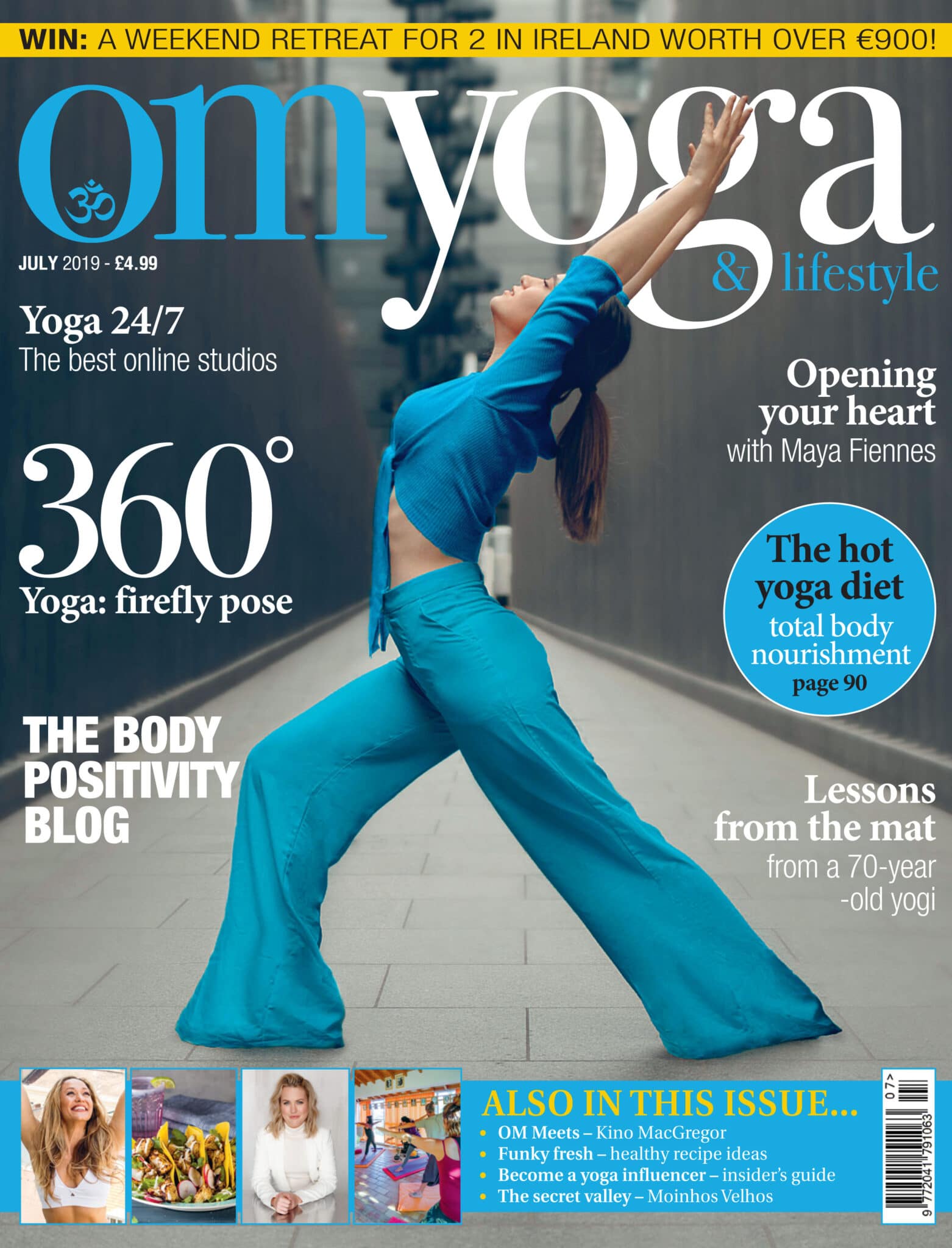
A 360º overview of...
Firefly Pose (Titibasana)
With Dr Kiki Morriss
Firefly is an advanced balancing pose that requires good alignment, physical strength and determination.
Start with Crow pose (Bakasana) and Four Limb Staff pose (Chaturanga Dandasana) to develop your upper body strength and ability to balance on your hands. Then practice Tortoise pose (Kurmasana) to increase the flexibility of your hamstrings and back. As you lift up into Firefly, remember to squeeze your thighs firmly onto your upper arms before you attempt to straighten your legs. Practice this wonderful pose with joyful effort and persistence.
The benefits of this pose:
- Strengthens your upper body
- Strengthens your hip flexors (including psoas muscles), quadriceps and abdominal muscles
- Stretches the back of your body
- Improves your balance
- Develops patience, determination and stamina
Contraindications:
- Avoid Firefly if you have an injury to your back, shoulders, elbows or wrists.
- Do not practice Firefly if you have carpal tunnel syndrome.
Variations:
- Lower your pelvis and angle your legs so they are pointing upwards rather than forwards.
- Bend your knees and cross your feet in front of you instead of extending your legs.
- Come into Crow and extend one leg in Half Firefly. Return to Crow and repeat on the other side.
FOCUS YOUR GAZE
- Your focal point (dristi) is at a fixed point straight ahead of you. Keep your gaze soft and focused to maintain your balance
- When you are very steady in Firefly, try closing your eyes. This will improve your proprioception (awareness of the position and movement of your body).

COMING INTO THE POSE
- Come into a standing forward bend with your arms between legs and your hands between your feet. Bend your knees.
- Place your hands behind your feet with your fingers pointing forwards.
- Position your thighs as high up on your upper arms as possible.
- Lift your feet and balance on your hands.
FOCUS ON YOUR HANDS
- Spread your weight evenly across your hands and fingers. Keep your fingers wide apart.
EXTEND AND ADDUCT YOUR LEGS
- Use your adductor muscles to press your thighs firmly into your arms.
- Use your quadriceps to straighten your knees. This action will lengthen your hamstrings.

FOCUS ON YOUR FEET
- Point your toes and stretch your anterior tibialis muscles.
STABILISE YOUR SHOULDERS
- Protract your shoulder blades and draw them away from the midline using your serratus anterior muscles. This action will stretch your trapezius and rhomboids.
- Turn your upper arms outwards and stabilise your shoulders using your infraspinatus and teres minor muscles.
- Straighten your elbows using your triceps.
FLEX YOUR HIPS AND TRUNK
- Use your psoas muscles to flex your hips. Feel your gluteus maximus stretching.
- As you bend your trunk forwards and engage your abdominal muscles, feel your erector spinae (deep spinal muscles) and quadratus lumborum stretching.

POSITION YOUR PELVIS
- Try to keep your pelvis in the same horizontal plane as your extended legs.
BREATHING
- Take five steady breaths as you balance.
REBALANCE YOUR BODY AFTER THE POSE
- To come out of the pose, bend your knees, lower your feet to the ground and sit in Easy pose (Sukhasana.)
- Circle your wrists five times in each direction. Flex and extend your wrists five times. Do this mindfully in time with your breath.






